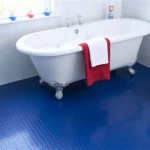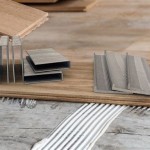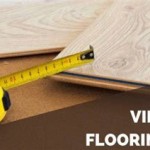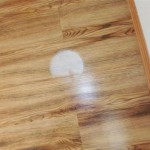Miter Saw Blade Selection for Cutting Laminate Flooring
Laminate flooring has become a prevalent choice for both residential and commercial spaces due to its durability, aesthetic appeal, and cost-effectiveness. Successfully installing laminate flooring often relies heavily on making precise cuts, and the choice of miter saw blade is paramount to achieving clean, chip-free edges. This article will delve into the factors influencing blade selection for cutting laminate flooring, exploring the different types of blades available, the importance of tooth count, blade material, and specialized features that contribute to optimal cutting performance.
The characteristics of laminate flooring itself influence blade selection. Laminate flooring is a composite material typically consisting of a fiberboard core overlaid with a decorative layer and a protective wear layer. The wear layer, often composed of aluminum oxide or melamine, presents a significant challenge to cutting blades due to its hardness and abrasive nature. An inappropriate blade can lead to chipping, splintering, and a premature dulling of the blade itself. Therefore, understanding the composition of laminate flooring is the initial step in selecting the appropriate miter saw blade.
The quality of the cut directly affects the overall appearance and longevity of the installed laminate floor. Clean, precise cuts minimize gaps between planks, preventing moisture infiltration and subsequent damage to the flooring's core. A poorly chosen blade not only compromises the aesthetics of the installation but also increases the risk of future problems related to moisture and structural integrity. This highlights the importance of selecting a blade specifically designed for cutting laminate materials.
Understanding Tooth Count and Geometry
The tooth count of a miter saw blade is a critical factor in determining the quality of the cut, especially when working with brittle materials like laminate flooring. A higher tooth count generally equates to a smoother, cleaner cut, as more teeth are engaged with the material at any given time. For laminate flooring, blades with a high tooth count, typically ranging from 60 to 80 teeth for a 12-inch blade, are highly recommended. These blades minimize chipping and splintering on both the face and the back of the laminate plank.
Conversely, blades with a lower tooth count are designed for ripping through thicker materials like wood. Using a low tooth count blade on laminate flooring will likely result in aggressive cutting, leading to significant tear-out and a rough, unprofessional finish. The aggressiveness of a low-tooth blade is simply not suited for the delicate nature of laminate's surface layer.
The geometry of the teeth also plays a crucial role. Several tooth grind types are commonly used in miter saw blades, each offering distinct cutting characteristics. The most prevalent for laminate flooring are: *
Triple Chip Grind (TCG):
This tooth grind features a combination of a flat-topped tooth alternating with a beveled tooth. The flat-topped tooth removes material, while the beveled tooth cleans up the edges, resulting in a smooth, chip-free cut. This grind is highly effective for cutting hard, abrasive materials like laminate flooring's wear layer. *High Alternate Top Bevel (Hi-ATB):
This grind features teeth with a steep alternating bevel, which produces a very clean cut in materials like melamine and laminates. The high bevel angle shears the material, reducing the risk of splintering. *Alternate Top Bevel (ATB):
Similar to Hi-ATB, but with a less steeper bevel. This grind is commonly used for general purpose cutting, but can still perform reasonably well on laminate, especially if combined with a high tooth count.A TCG grind is generally considered the best choice for cutting laminate flooring because it is specifically designed to handle the material's abrasive nature and minimize chipping. However, a Hi-ATB grind can also be a viable option, offering a similarly clean cut.
Blade Material and Coating Considerations
The material composition of the miter saw blade significantly impacts its durability and cutting performance. Carbide-tipped blades are the industry standard for cutting laminate flooring due to their superior hardness and resistance to wear. Carbide is a much harder material than steel, allowing the blade to maintain its sharpness for a significantly longer period, especially when cutting through the abrasive wear layer of laminate.
High-speed steel (HSS) blades are less expensive than carbide-tipped blades, but they are not suitable for cutting laminate flooring. HSS blades dull quickly when exposed to the abrasive materials found in laminate, leading to a decrease in cutting performance and an increased risk of chipping. The longevity and cutting efficiency of carbide-tipped blades far outweigh the initial cost difference, making them the superior choice for laminate flooring installation.
In addition to the base material, some miter saw blades feature specialized coatings that further enhance their performance and lifespan. These coatings can reduce friction, heat buildup, and resin adhesion, all of which contribute to a smoother, cleaner cut and prolonged blade life. Common coatings include: *
Titanium Nitride (TiN):
This coating is extremely hard and wear-resistant, reducing friction and extending blade life. *Non-Stick Coatings:
These coatings prevent resin and pitch from adhering to the blade, reducing heat buildup and improving cutting performance. *Chrome Plating:
This coating provides corrosion resistance and reduces friction.While coatings add to the cost of the blade, they can be a worthwhile investment, especially for professionals who frequently cut laminate flooring. The reduced friction and heat buildup translate to smoother cuts, less strain on the saw motor, and a longer-lasting blade.
Specialized Blade Features and Techniques
Beyond tooth count, geometry, and material, certain specialized blade features can further improve the cutting performance on laminate flooring. Features such as expansion slots and vibration dampeners can contribute to a smoother, quieter cut and reduce the risk of blade wobble.
Expansion slots, also known as laser-cut slots, are strategically placed in the blade body to allow for expansion and contraction due to heat buildup. This prevents the blade from warping or distorting, which can lead to inaccurate cuts and increased vibration. Vibration dampeners are often incorporated into the blade design to reduce noise and vibration, resulting in a more comfortable and controlled cutting experience.
Proper cutting technique is just as important as selecting the right blade. When cutting laminate flooring, it is crucial to feed the material slowly and steadily into the blade. Avoid forcing the material or applying excessive pressure, as this can lead to chipping and splintering. Let the blade do the work, and maintain a consistent feed rate throughout the cut. A slow, controlled cut will produce a significantly cleaner edge than a rushed or forced cut.
Another technique to minimize chipping is to score the laminate flooring before making the final cut. This can be achieved by using a utility knife or a scoring tool to create a shallow groove along the cut line on the face of the plank. Scoring the laminate helps to prevent the wear layer from chipping when the blade enters the material. This technique is particularly useful when cutting delicate or thin laminate planks.
Furthermore, using a zero-clearance insert on the miter saw can significantly reduce chipping on the underside of the laminate. A zero-clearance insert is a custom-made piece of material that fits snugly around the blade, minimizing the gap between the blade and the saw table. This provides support to the laminate as it is being cut, preventing the edges from splintering. Zero-clearance inserts can be purchased or easily made from scrap wood or plastic.
Regularly cleaning the miter saw blade is essential for maintaining its performance. Resin and pitch buildup can accumulate on the blade, reducing its cutting efficiency and increasing friction. Use a blade cleaner specifically designed for removing resin and pitch. Always follow the manufacturer's instructions when cleaning the blade. A clean blade will not only cut more efficiently but also last longer.
Finally, it is crucial to inspect the miter saw blade regularly for signs of damage or wear. Look for chipped or missing teeth, cracks in the blade body, or excessive dullness. A damaged or worn blade should be replaced immediately to prevent accidents and ensure accurate cuts. Attempting to use a damaged blade can be dangerous and will likely result in poor-quality cuts.

How To Choose The Right Saw Blade Cut New Flooring Ll
D1216lf Saw Blades Specialty Laminate Flooring

The Best Saw Blade For Cutting Laminate Flooring Bob Vila

Edge Laminate Circular Saw Blades Bosch Professional

How To Cut Laminate Flooring A Complete Diy Guide

Laminate Flooring Tools For Installing

Diablo 10in X 12 Teeth Pergoblade Saw Blade For Laminate And Wood Flooring D1012lf The Home Depot

Top 5 Best Saw Blade For Laminate Flooring 2024

Edge Laminate Circular Saw Blades Bosch Professional

The Best Saw Blade For Cutting Laminate Flooring Bob Vila
Related Posts








